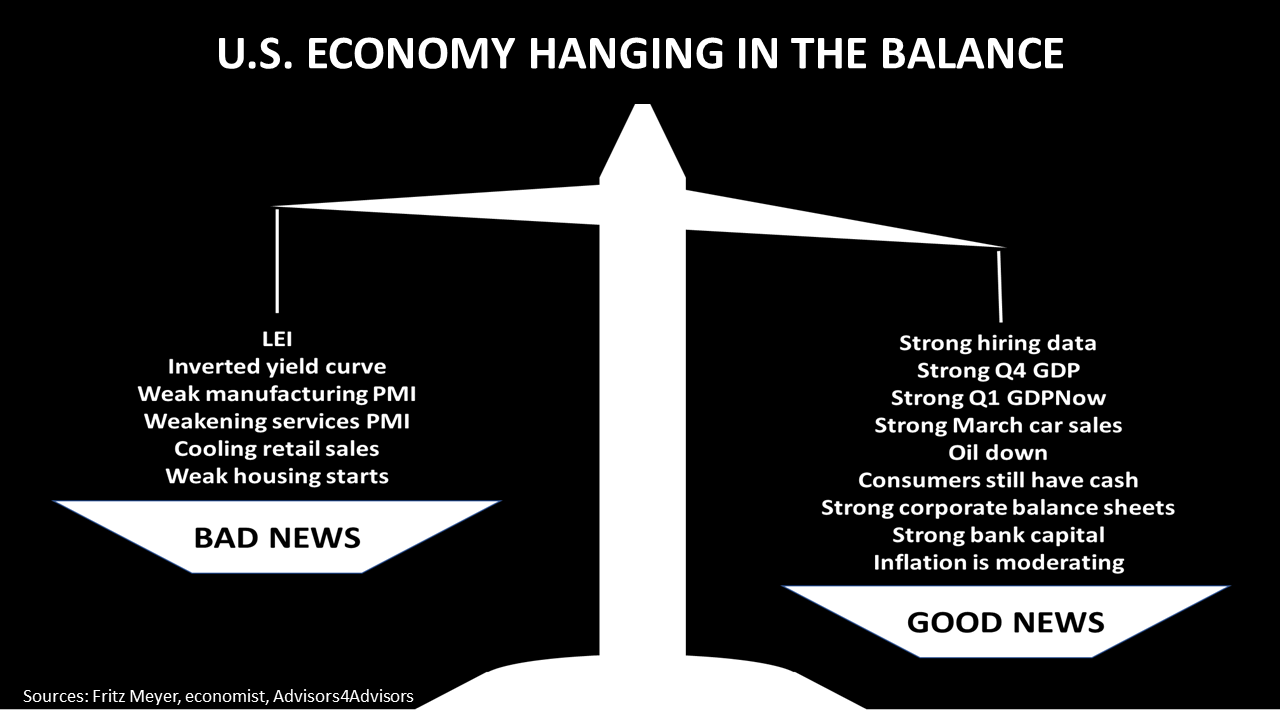The GDPNow algorithm designed by the Federal Reserve Bank of Atlanta to estimate real U.S. economic growth in real-time was updated Tuesday and it’s predicting a +2.5% growth rate for the first quarter of 2023, which ended March 31.
That’s just the latest of numerous positive indicators as the bear market enters its eleventh month. (Bear markets historically last about 11 months.)
Economic growth – periods when more Americans make more money and buy more goods and services -- drives stock prices. So, it’s always wise to stay focused on the factors that drive economic growth, like job creation, consumer spending, and inflation.
It’s especially important to stay focused on these mathematical factors of growth when the economy is slowing, as it has been doing recently.
The U.S. central bank raised interest rates about 800% in the past 13 months and it’s trying to slow the economy to stop an inflation burst caused by pandemic-related supply chain problems and an oil price spike after Russia invaded Ukraine on February 23, 2022.
The Federal Reserve mistook the rise in inflation as a temporary condition after the largest fiscal stimulus in world history, the Federal payments to individuals and businesses amid the economic shutdown caused by the Covid 19 pandemic. The Fed is trying to excise inflation expectations by slowing the economy, but its interest rate hikes could tip the economy into a recession.
The outlook is not for strong growth, but it is also not bleak. The past does not always indicate what the future holds, but current economic problems are not unprecedented. The Fed’s response to the banking crisis was swift and has worked, so far.
The consensus of economic experts, according to a survey in early April by The Wall Street Journal, is for slow growth for 2023 but no recession.
The S&P 500 stock index closed Friday at 4133.52, up +0.09% from Thursday, and down -0.10% from a week ago. The index is up +84.75% from the March 23, 2020 bear market low and down -13.82% from its January 3, 2022. all-time high.
The Standard & Poor's 500 (S&P 500) is an unmanaged group of securities considered to be representative of the stock market in general. It is a market-value weighted index with each stock's weight proportionate to its market value. Index returns do not include fees or expenses. Investing involves risk, including the loss of principal, and past performance is no guarantee of future results. The investment return and principal value of an investment will fluctuate so that an investor's shares, when redeemed, may be worth more or less than their original cost. Current performance may be lower or higher than the performance quoted.



